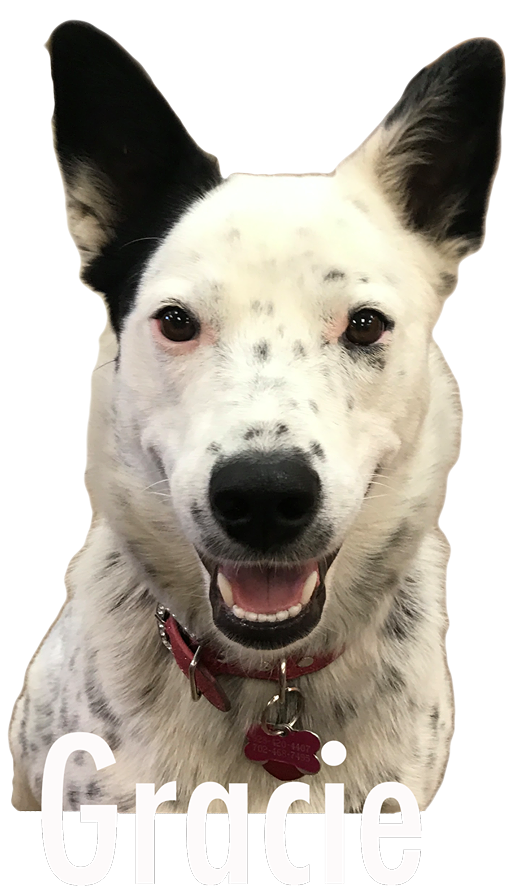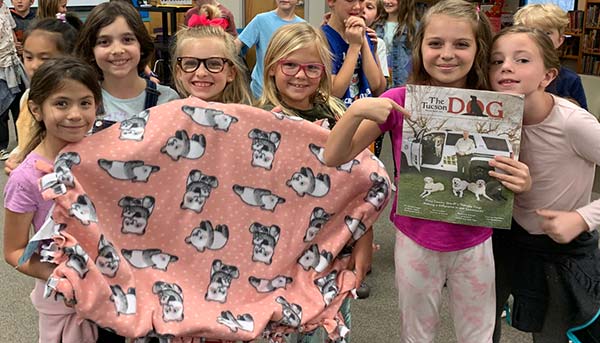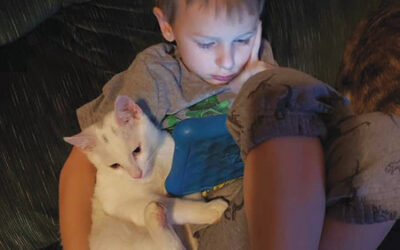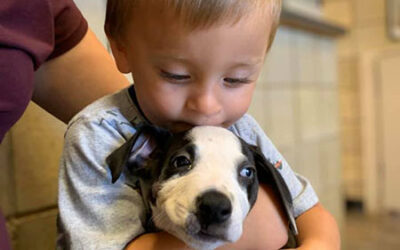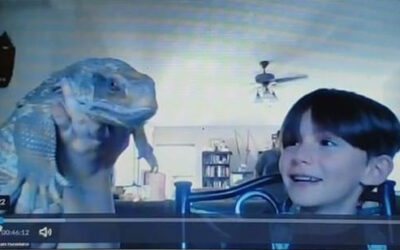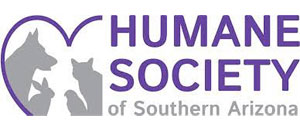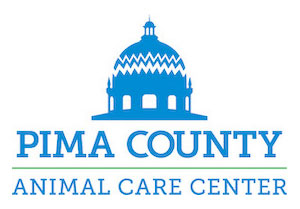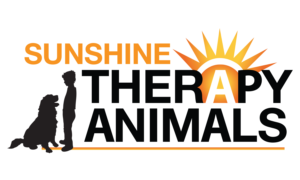Story by Bella Wexler, Photos by Julie Farbarik
At Catalina Foothills School District’s Canyon View Elementary, the love for animals runs deep. This is proven by the school’s third grade students both within and beyond the classroom. On March 10, they filed into their school library for a presentation about responsible pet ownership. Already, the students had been diligently working on a project to make and distribute blankets for homeless pets at Pima Animal Care Center. During the presentation, the young students’ eagerly raised hands filled the room as their curiosity, personal anecdotes and prior knowledge on the subject of animal welfare abounded. To those who are unfamiliar with the spirit cultivated among this elementary school’s students, the scene may have been surprising. But, to those who are accustomed to Canyon View’s culture of active participation and respect, it was just another day.
The presentation was delivered by a Catalina Foothills School District parent and animal welfare advocate, Allison Wexler along with her youngest daughter Sage Wexler, a current sixth grade student at Esperero Canyon Middle School next door to Canyon View. After a brief introduction of her
own background, Allison ad-dressed the purpose of animal shelters and rescues by introducing PACC and the Humane Society of Southern Arizona. She also brought up the concept of fostering. Before she had the chance to explain it, however, several students’ hands had shot up in the hopes of sharing their own ideas. According to Audrey Smith, “foster(ing) basically means taking care of a pet temporarily until you find them a permanent home”. Allison and Sage have had lots of experience fostering pets in their home. Some students asked about whether or not it is sad for foster families to say goodbye to a pet that has been adopted. “Yes,” says Allison, “but we accept that sadness as part of the happiness of finding that animal a home”. She went on to explain how choosing to adopt a fostered pet saves that one animal; but, passing the pet onto a forever home makes room for the foster family to rescue others in the future.
From this point on, the presentation became an interactive balance of sharing and listening to accommodate the students’ drive to participate. Allison proceeded to describe the lesser known roles of shelters beyond finding new homes for pets. This includes licensing, vaccinating, spaying and neutering, providing pet owner resources, microchipping, educating about public safety, lending volunteer opportunities and more. Students asked questions ranging from what to do if they see a stray animal to what a microchip is. Adina Lytle shared her own experience finding a stray dog and, with the help of her father, making contact with the owner on social media to reunite the pet with its family. Allison emphasized the importance of confiding in a trusted adult for assistance when students see an unknown animal out and about like in Adina’s situation. This is very important when pertaining to domestic animals, but even more critical with wild animals. If a wild animal is in danger, it is safest to avoid approaching it and instead call wildlife control services. Several students were particularly fascinated with the concept of a microchip and its processing. Most of their concerns came from a place of empathy; they wondered if microchipping was painful. Luckily, Allison was able to assure them that it is a very safe, necessary means of protecting pets.
Next, Sage explained to students why pet overpopulation is such an urgent matter that can be ameliorated by spay and neuter procedures. It is important to teach responsible animal care practices to young generations so that they can grow up championing this cause in dire need of attention. It is especially inspiring to see an already young student like Sage extend her passion for such a relevant issue to her even younger peers.
Sage and Allison continued by walking students through the process of adoption, benefits of rescuing pets rather than buying them, and how to get further involved in animal welfare. They cited the Hand in Paw Kids Club through the Humane Society of Southern Arizona as an opportunity for students to gain experience as hands-on animal welfare advocates. They also mentioned volunteering with a parent at PACC, fostering pets at home and donating resources from PACC’s Wish List for Friends through www.smile.amazon.com. These are all options that the students took to heart despite their already generous pillow and blanket making project for PACC. Canyon View third graders’ curiosity and passion for animal rights are a testament to the notion that learning and leading go hand in hand. These heroes aren’t born; they are taught.
